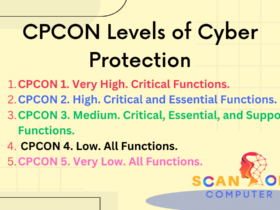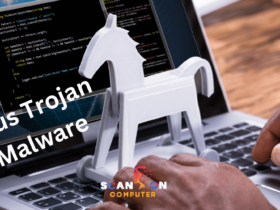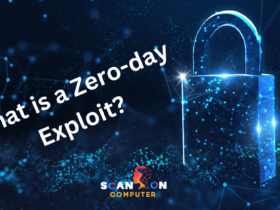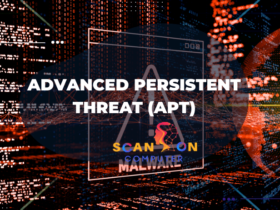Understanding the Key Differences and Benefits
In today’s rapidly evolving cyber threat landscape, cybersecurity breaches can cost organizations millions of dollars and irreparably damage their reputation. For security professionals, executives, and industry leaders, making informed decisions about cybersecurity frameworks is critical. Two frameworks gaining considerable attention are Zero Trust vs Secure Access Service Edge (SASE). But what differentiates these approaches, and how can organizations leverage them to build stronger defenses?
This detailed guide will explore the distinctions, complementarities, and practical applications of Zero Trust and SASE, providing clarity to cybersecurity specialists and business leaders alike.
What is Zero Trust Security?
Zero Trust security is a paradigm shift from conventional security models. Based on the principle of never trust, always verify, Zero Trust assumes that threats can come from anywhere—inside or outside the network perimeter—and that no entity should be implicitly trusted.
Core Principles of Zero Trust
- No implicit trust: Every access attempt requires strict identity verification, regardless of network location.
- Least privilege: Users and devices receive only the minimum access rights necessary for their tasks.
- Continuous authentication: Verification is ongoing, not a one-time checkpoint.
- Device security: Verification includes ensuring devices meet security standards before granting access.
Zero Trust minimizes the attack surface by preventing lateral movement across networks, making it crucial for protecting modern, hybrid, and cloud-centric environments. It is especially relevant as organizations adopt remote work and cloud solutions extensively.
What is Secure Access Service Edge (SASE)?
SASE is a comprehensive cybersecurity architecture that merges networking and security services delivered through cloud-native platforms. Unlike traditional perimeter-based security, SASE provides secure access anywhere users or devices connect.
SASE Architecture Overview
- Unified service: Combines SD-WAN, firewall as a service (FWaaS), secure web gateways (SWG), cloud access security broker (CASB), and Zero Trust Network Access (ZTNA).
- Cloud-native delivery: Positioned close to users at the network edge for optimal performance and security.
- Identity-driven access: Uses verified identities of users and devices to enforce policies.
- Designed for modern environments: Enables secure connectivity for remote workers, multi-cloud resources, and branch locations.
The cloud-centric design of SASE makes it ideal for organizations looking to simplify security infrastructure while addressing the challenges of distributed environments.
Zero Trust vs. SASE: Key Differences
Though related, Zero Trust and SASE have distinct roles and scopes within cybersecurity.
| Feature | Zero Trust Security | SASE |
| Primary focus | Access control and continuous verification | Integrated networking and security services |
| Scope | Security framework or model | Cloud-native platform spanning network and security |
| Implementation | Usually hybrid (on-prem and cloud) | Fully cloud-native |
| Identity’s role | Continuous verification of user and device | Uses identity and context for dynamic access policies |
| Network design orientation | Security at resource level | Secure edge access with SD-WAN and cloud gateways |
Zero Trust represents a security mindset focused on strict access controls, while SASE delivers these principles along with network optimization as a unified cloud service. SASE often embeds Zero Trust within a broader platform, but Zero Trust itself goes beyond mere policy enforcement to continuous verification across all access points.
Identity and Access Management in Zero Trust and SASE
Both frameworks share a commitment to identity-centric security, but their approaches differ:
- Zero Trust emphasizes granular, continuous validation of all users and devices, ensuring access is only granted when strictly justified.
- SASE builds on this by combining identity with network context and cloud-delivered security functions for enforceable policies that adapt dynamically.
This synergy supports stringent control without sacrificing user experience across diverse environments.
Deployment and Implementation Considerations
- Zero Trust typically demands integration with existing IT infrastructure, which may include legacy systems and hybrid architectures, sometimes requiring significant upgrades and resource investment.
- SASE is delivered as a cloud-native solution, simplifying deployment for organizations with remote workforces and cloud dependencies.
Choosing the right path should align with business objectives, infrastructure, and security maturity.
How Zero Trust and SASE Complement Each Other
Viewed together, Zero Trust and SASE form a powerful security partnership:
- Zero Trust principles provide the foundation for continuous, least-privilege access controls.
- SASE platforms operationalize these principles with cloud scalability, integrated security functions, and edge optimization.
Organizations that blend these approaches can ensure secure, seamless access across any device, location, or network while simplifying management and improving scalability.
Benefits of Implementing Zero Trust and SASE
The combined adoption offers numerous benefits:
- Stronger defense against breaches: Continuous validation and minimized access reduce attack surfaces.
- Operational efficiency: Consolidation of security tools and policies streamlines management.
- Enhanced user experience: Cloud proximity reduces latency; identity-driven security supports remote work.
- Scalability: Easily adapts to changing workforce sizes and evolving cloud environments.
- Regulatory compliance: Granular access controls and auditing help meet standards.
Challenges and Considerations
Implementing these models is not without challenges:
- Complexity: Integrating Zero Trust principles into existing ecosystems requires expertise and careful planning.
- Resource intensity: Initial deployment can strain budgets and staff due to infrastructure upgrades and ongoing monitoring needs.
- Legacy system integration: Older applications may require modifications for compatibility.
- Policy management: Continual updates and vigilance to maintain effective controls.
Strategic, phased implementations and prioritizing critical assets can mitigate these hurdles.
FAQ Section
- What is the primary difference between Zero Trust and SASE?
Zero Trust is a security framework emphasizing strict, continuous verification of access, while SASE is a cloud-native platform that integrates networking and security services, including Zero Trust principles. - Can an organization implement SASE without Zero Trust?
While technically possible, SASE implementations rely heavily on Zero Trust principles to enforce secure access efficiently; Zero Trust is often foundational to SASE solutions. - How do Zero Trust and SASE improve remote access security?
By continuously verifying user identity and device posture and applying cloud-based edge security, these models provide secure, low-latency remote access. - What industries benefit the most from Zero Trust and SASE?
Highly regulated sectors such as finance, healthcare, government, and organizations with distributed workforces benefit significantly from these robust security frameworks. - How does Zero Trust support compliance and regulatory requirements?
Zero Trust helps meet compliance by enforcing least privilege, continuous monitoring, and producing auditable access logs for regulatory reporting.
Conclusion
Understanding each framework’s distinctive capabilities and how Zero Trust vs Secure Access Service Edge (SASE) complement one another empowers organizations to build a resilient cybersecurity posture. Zero Trust provides the rigorous verification foundation, while SASE offers a scalable, cloud-based platform for secure, optimized access across diverse environments. Together, they form an indispensable duo for protecting critical digital assets in today’s complex threat landscape.
Security leaders are encouraged to evaluate their current architectures and consider integrating these frameworks to safeguard their business’s future.













Leave a Reply
View Comments